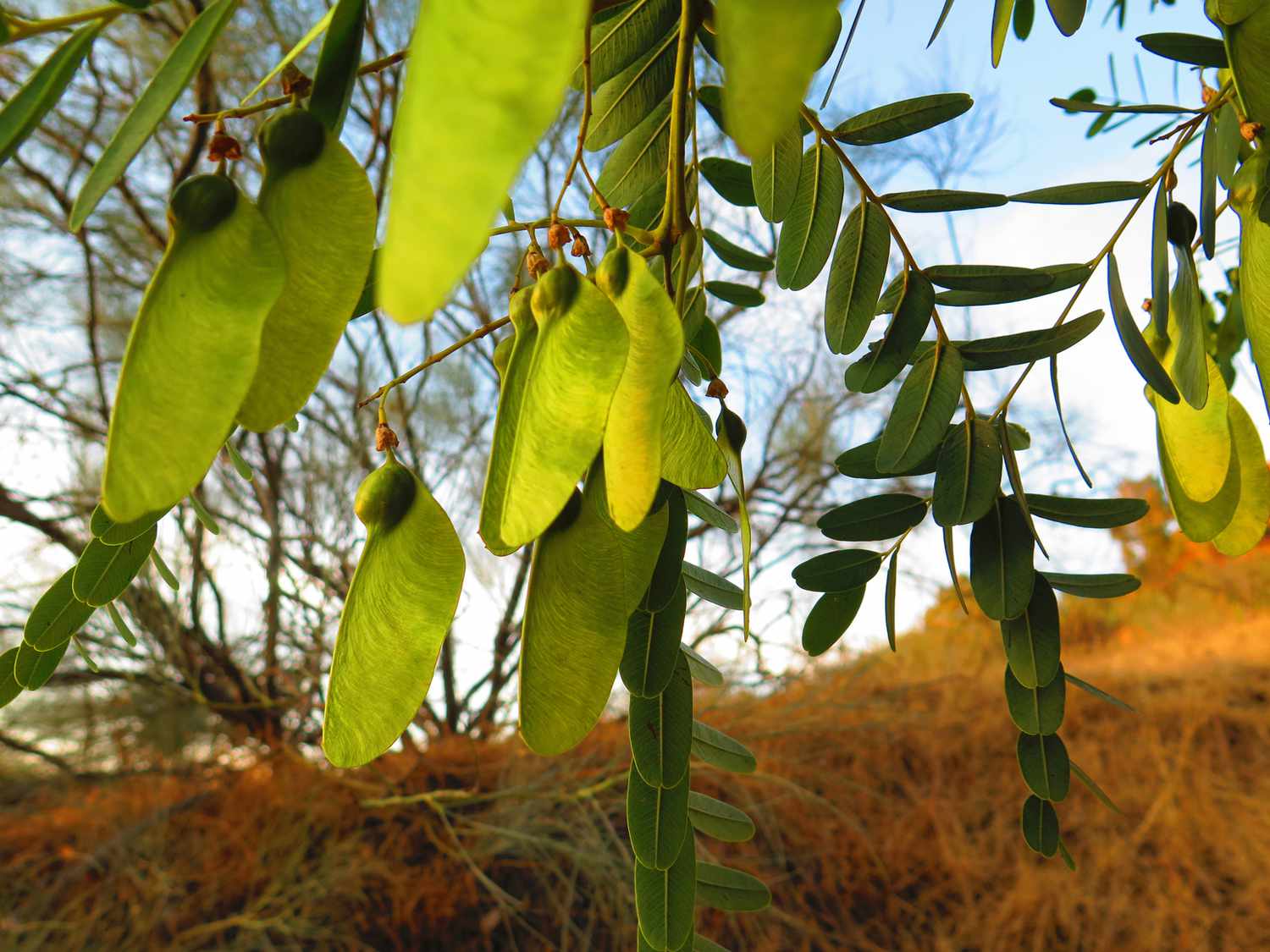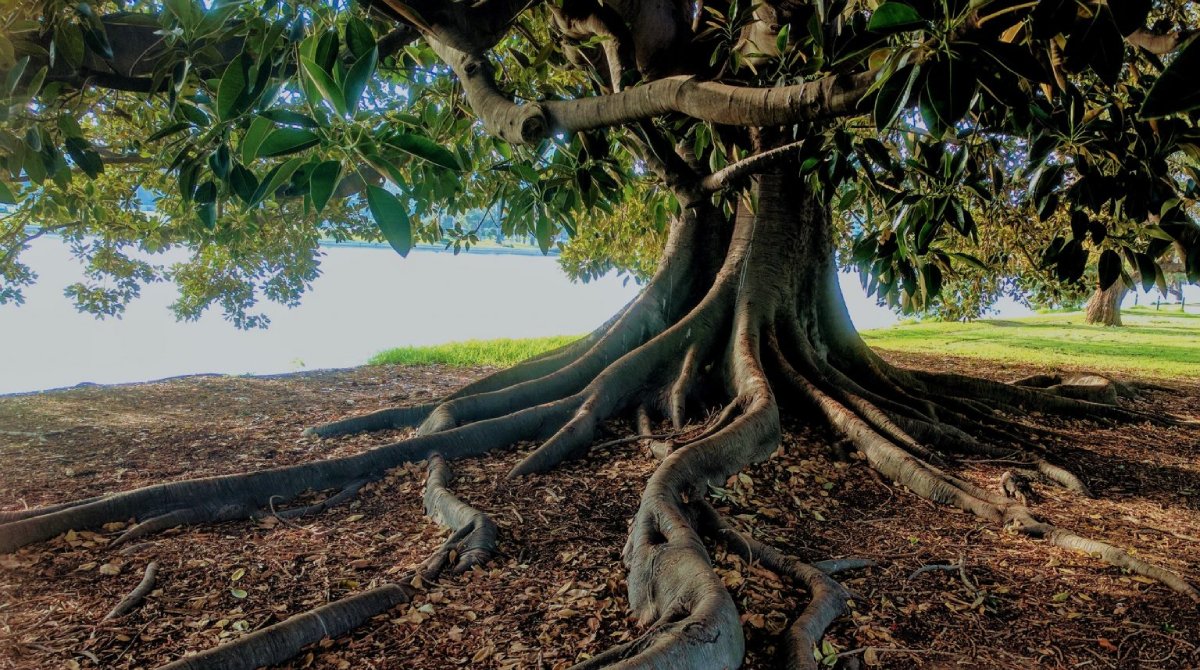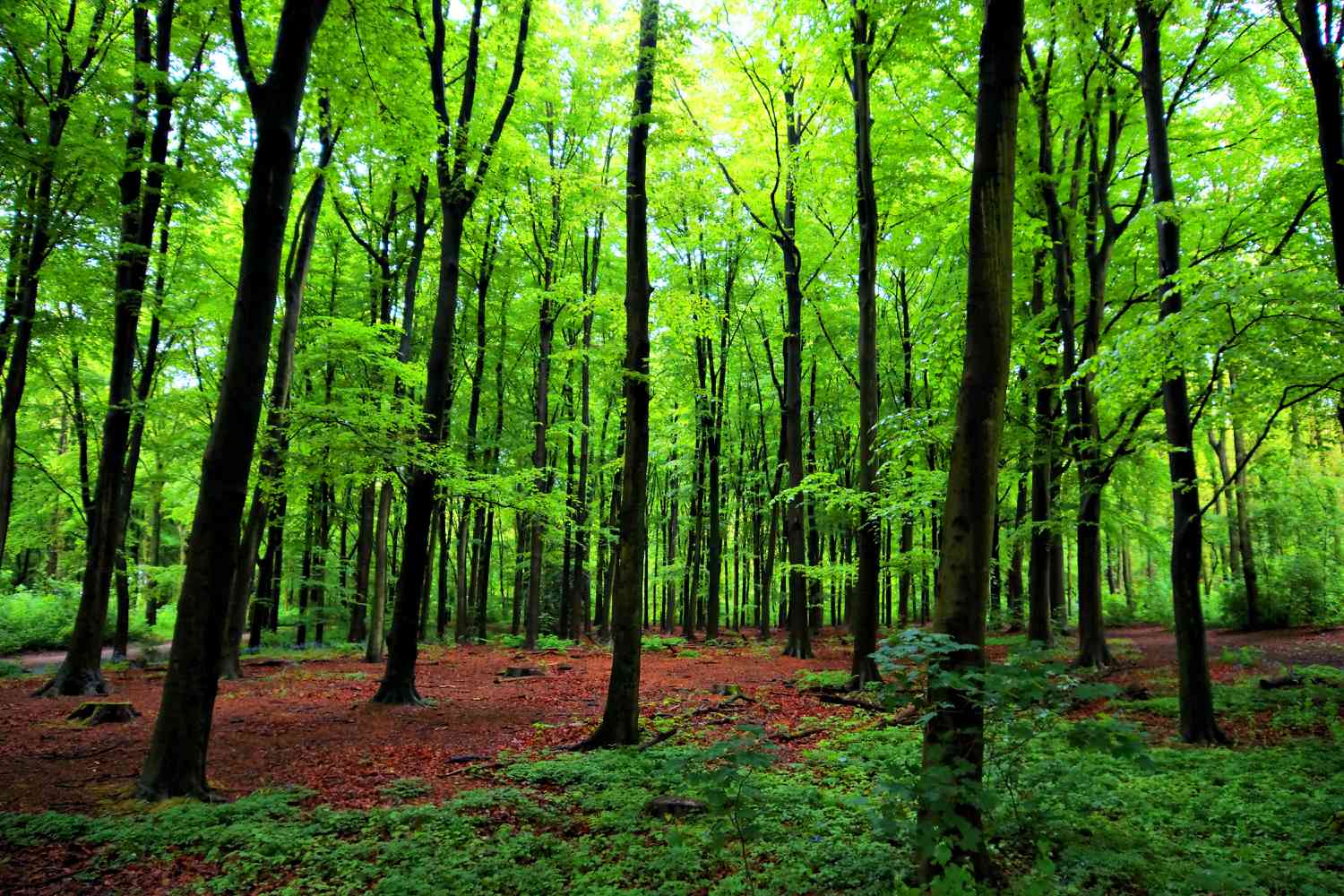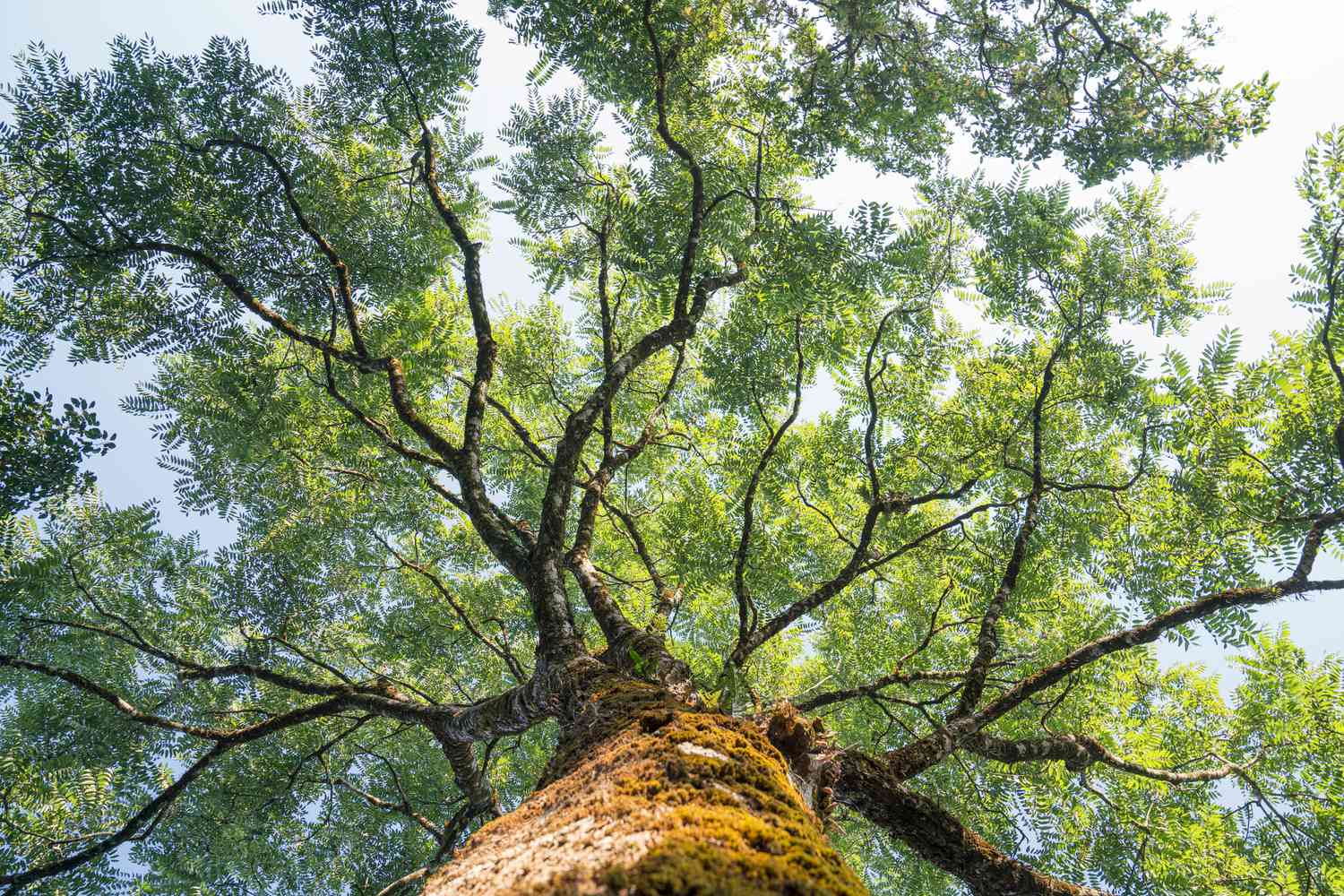Home>Types of Gardening>Ornamental Gardening>Which Trees Have Acorns
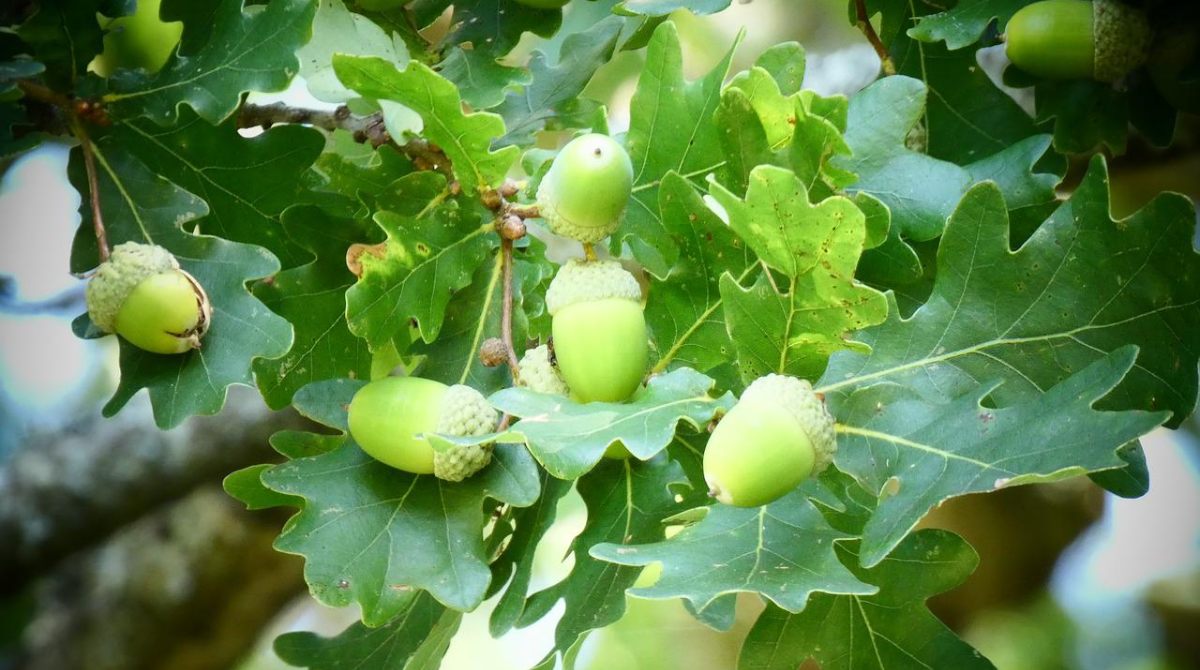

Ornamental Gardening
Which Trees Have Acorns
Modified: January 22, 2024
Discover the top ornamental trees that produce acorns in your garden. Enhance your ornamental gardening with these stunning tree options.
(Many of the links in this article redirect to a specific reviewed product. Your purchase of these products through affiliate links helps to generate commission for Chicagolandgardening.com, at no extra cost. Learn more)
Table of Contents
Introduction
Welcome to the world of ornamental gardening, where beauty and aesthetics meet nature’s wonders. Ornamental gardening is the art and practice of cultivating plants for decorative purposes, enhancing the visual appeal of outdoor spaces. Among the fascinating elements of ornamental gardening are the various types of trees that add elegance and charm to any landscape.
Trees not only provide shade and shelter but also serve as focal points that command attention and admiration. Each tree species has its unique characteristics, from leaf shapes and colors to branch structures and bark textures. In this article, we will explore some of the most popular types of trees known for their ornamental value and the stunning beauty they bring to any garden or park.
Whether you’re an avid gardener or simply have a love for nature’s beauty, understanding the diverse range of trees available can help you make informed decisions when designing your landscape. From majestic oak trees to delicate maple trees, each species has its own captivating features and can create a distinct atmosphere in your outdoor space.
So, let’s dive into the enchanting world of ornamental trees and discover which ones can transform your garden into a captivating natural haven. Whether you have a small backyard or a vast property, there’s an ornamental tree out there that’s perfect for you.
Oak Trees
When it comes to ornamental trees, oak trees are one of the most iconic and majestic choices. These stately trees are known for their strength and longevity, making them a symbol of endurance and resilience. Oak trees belong to the genus Quercus and are native to various regions across the globe.
One of the striking features of oak trees is their distinctive leaf shape. The leaves are typically lobed and have a glossy green color, which turns vibrant shades of red, orange, or brown during the autumn season. This change in color adds a touch of warmth and vibrancy to any garden landscape.
In addition to their gorgeous foliage, oak trees also produce acorns, which are cherished by wildlife and add an element of interest to the tree’s appearance. The acorns are round or oval-shaped nuts that grow in clusters and serve as a valuable food source for animals such as squirrels and deer.
The oak tree’s bark is another remarkable feature that adds visual appeal to the landscape. Depending on the species, the bark can be smooth or rough, and it often displays a pattern of deep vertical fissures or ridges.
In terms of size, oak trees vary widely. Some oaks are relatively compact, reaching heights of around 20 feet, while others can grow to towering heights of 100 feet or more. This range allows for a great diversity in choosing an oak tree that suits your space requirements.
Oak trees are known for their adaptability to different soil types and climates, making them an excellent choice for many regions. They are highly resilient and can withstand harsh weather conditions, making them a reliable addition to any garden or park.
Overall, oak trees are a popular choice for ornamental gardening due to their timeless beauty, exceptional strength, and long lifespan. They bring a sense of grandeur and natural grace to any landscape, making them a prominent favorite among gardeners and nature enthusiasts alike.
Beech Trees
Beech trees, belonging to the genus Fagus, are renowned for their stunning foliage and elegant appearance. These deciduous trees have a graceful and symmetrical growth habit, making them a popular choice for ornamental gardens and landscapes.
One of the standout features of beech trees is their beautiful leaves. During the spring and summer months, the leaves are a vibrant shade of green, creating a lively and fresh atmosphere. As autumn approaches, the foliage undergoes a spectacular transformation, displaying shades of golden yellow, orange, and sometimes even a deep crimson. The contrast of colors adds a striking visual element to the landscape.
Beech trees are also recognized for their smooth and silvery-gray bark, which develops with age. It adds a touch of elegance and sophistication to the tree’s overall appearance. The trunk of a mature beech tree acquires a distinct look with its attractive bark and strong branching structure.
These trees typically grow to moderate heights, ranging from 50 to 70 feet, but some can reach up to 100 feet when conditions are favorable. The beech tree’s rounded canopy provides ample shade and creates a cozy and inviting atmosphere underneath.
Beech trees are adaptable to various soil types, preferring well-drained and slightly acidic soils. They thrive in areas with moderate rainfall and can tolerate both sun and partial shade. When selecting a spot for planting a beech tree, consider giving it ample space, as its spreading canopy may require enough room to expand.
Beech trees are known to live for many decades, with some specimens even reaching ages of several centuries. Their longevity is a testament to their resilience and adaptability.
Overall, the striking foliage, elegant bark, and graceful growth habit make beech trees a prized addition to any ornamental garden. Whether planted as standalone specimens or in rows to create a beautiful avenue-like effect, these majestic trees never fail to captivate with their natural beauty.
Chestnut Trees
Chestnut trees, belonging to the genus Castanea, are known for their majestic stature and culinary importance. These deciduous trees are not only ornamental but also provide a valuable food source in the form of delicious chestnuts.
One of the striking features of chestnut trees is their large and showy leaves. The leaves are toothed and have a glossy dark green color, which adds vibrancy to the landscape during the growing season. In autumn, the foliage transforms into stunning shades of yellow and copper, creating a breathtaking display of color.
The bark of chestnut trees is another unique attribute. It has a smooth and relatively featureless appearance when the tree is young, gradually developing distinctive furrows and ridges as it matures. The bark adds texture and visual interest to the tree’s overall appearance.
When it comes to size, chestnut trees can reach impressive heights of up to 100 feet or more, making them true giants in the landscape. Their broad, spreading canopy provides ample shade, making them ideal for creating cool and comfortable outdoor spaces.
One of the most cherished aspects of chestnut trees is their bountiful harvest of tasty nuts. Chestnuts have been a staple food in many cultures for centuries, and the trees continue to provide a sustainable source of nourishment. The nuts are encased in prickly, spiky husks that split open when the chestnuts are ripe and ready to be harvested.
Chestnut trees thrive in well-drained soils, preferring slightly acidic to neutral pH levels. They are typically found in areas with moderate rainfall and can withstand a range of temperatures. Chestnut trees are also known for their resistance to many diseases and pests that can affect other tree species.
Whether planted as specimens in a garden or as part of an orchard, chestnut trees add beauty and functionality to any landscape. They provide shade, enhance the aesthetics with their stunning foliage, and offer a delicious autumn harvest that brings joy to both humans and wildlife.
Overall, chestnut trees are not only magnificent ornamental trees but also offer the added bonus of providing a delectable culinary treat. Their beauty, size, and edible produce make them a highly desirable choice for any garden or landscape.
Hickory Trees
Hickory trees, belonging to the genus Carya, are renowned for their strength, durability, and culinary value. These deciduous trees are not only visually appealing but also provide a range of benefits to both humans and wildlife.
One of the defining features of hickory trees is their unique leaf structure. The leaves are compound, typically consisting of five to nine individual leaflets that radiate from a common center. The leaflets have a serrated edge and a vibrant green color during the growing season, turning shades of gold and yellow in the fall. This transition creates a stunning display of autumn foliage.
The bark of hickory trees is distinctive and often characterized by deep furrows, giving it a rugged and textured appearance. The bark’s color can range from gray to dark brown, adding visual interest and enhancing the tree’s overall aesthetic appeal.
Hickory trees are known for their strong and durable wood, which has been traditionally used in furniture-making, flooring, and tool handles. The wood’s rich grain and warm tones make it highly sought after for its natural beauty.
In terms of size, hickory trees can vary, with some species growing to heights of 70 to 100 feet. The tree’s branches spread out in a broad and symmetrical manner, creating a beautiful silhouette against the sky.
One of the most notable aspects of hickory trees is their bountiful production of nuts. Hickory nuts are a valuable food source for wildlife, including squirrels and birds. The nuts, enclosed in a hard shell, have a distinct flavor and are often used in baking and cooking.
Hickory trees typically thrive in well-drained soils and are known for their ability to tolerate a range of soil conditions. They prefer full sun exposure but can also grow in partially shaded areas. Hickory trees are adaptable to various climates and are found in different regions around the world.
Overall, hickory trees are a popular choice for ornamental gardening due to their striking foliage, textured bark, and valuable hardwood. They not only add beauty and visual interest to landscapes but also provide ecological benefits and a source of delicious nuts.
Walnut Trees
Walnut trees, belonging to the genus Juglans, are renowned for their beautiful wood, nutritious nuts, and distinctive foliage. These deciduous trees are prized for their ornamental value and their contribution to both culinary and woodworking endeavors.
One of the standout features of walnut trees is their unique leaf structure. The leaves are composed of numerous leaflets arranged in a pinnate pattern, giving them a delicate and feathery appearance. During the growing season, the foliage is a vibrant shade of green, adding a touch of fresh elegance to any landscape. The leaves turn into shades of yellow and brown during the autumn months, creating a stunning display of fall colors.
The bark of walnut trees is another distinctive characteristic. It is often rough and deeply furrowed, adding texture and visual interest to the tree’s overall appearance. The bark’s color ranges from light gray to dark brown, depending on the species.
Walnuts, the tree’s prized fruits, are enclosed in a hard shell. Once cracked open, these nutritious nuts reveal a rich, flavorful kernel that is widely used in cooking, baking, and salads. The nut’s distinctive shape and taste make it a favorite ingredient in various culinary creations.
Walnut trees are known for their large size, typically growing to heights of 50 to 75 feet. Their spreading canopy provides ample shade, making them ideal shade trees for gardens and outdoor living spaces.
These trees can adapt to different soil types, although they prefer well-drained soils with moderate moisture content. Walnut trees thrive in full sun but can tolerate partial shade. They are also known for their resilience to various weather conditions, making them suited for a range of climates.
Aside from their culinary value, walnut trees are also highly regarded for their beautiful wood. The walnut wood is known for its straight grain, rich colors, and durability. It is commonly used in furniture-making, flooring, cabinetry, and other woodworking projects.
Overall, walnut trees are a prized addition to any ornamental garden, offering not only stunning foliage and distinctive bark but also a bountiful harvest of delicious and nutritious nuts. Whether grown for their aesthetic appeal or their culinary and woodworking value, walnut trees are sure to enhance any landscape with their natural beauty and versatility.
Pecan Trees
Pecan trees, scientifically known as Carya illinoinensis, are highly valued for their delicious nuts and graceful appearance. These deciduous trees are native to North America and have become a popular choice in ornamental gardening due to their impressive size, attractive foliage, and culinary significance.
One of the notable features of pecan trees is their striking foliage. The leaves are composed of multiple leaflets that radiate from a central stem, giving them an elegant and feathery appearance. During the spring and summer months, the foliage is a vibrant shade of green, creating a lush and inviting canopy. As autumn approaches, the leaves turn rich shades of yellow and brown, providing a gorgeous display of seasonal color.
The bark of pecan trees is another attractive aspect. It is typically smooth and gray when young, gradually developing deeper furrows and ridges as the tree ages. The textured bark adds visual interest and gives the tree a rustic charm.
One of the primary reasons for cultivating pecan trees is their delicious nuts. Pecans are not only a delightful treat but also a versatile ingredient in various recipes, from pies and cookies to salads and savory dishes. The nuts are enclosed in a hard shell that splits open when mature, revealing the flavorful and nutritious kernel inside.
Pecan trees are known for their impressive size and longevity. They can reach heights of up to 100 feet, making them one of the tallest trees in many landscapes. The wide-spreading branches create a picturesque silhouette and provide ample shade in outdoor spaces.
These trees thrive in well-drained soils with moderate moisture levels. They prefer full sun exposure to ensure optimal growth and nut production. Pecan trees are relatively adaptable to different climates but tend to thrive in regions with warm summers and mild winters.
In addition to their culinary and ornamental value, pecan trees also contribute to the environment by providing habitat and food for various wildlife species. Birds, squirrels, and other animals take advantage of the nuts, while the tree’s broad canopy offers shelter and nesting sites.
Overall, pecan trees are a fantastic addition to ornamental gardens, providing both aesthetic appeal and delicious rewards. Their stunning foliage, textured bark, and impressive size make them a standout feature in any landscape. Whether enjoyed for their nuts or admired for their beauty, pecan trees are sure to bring joy, shade, and a touch of Southern charm to your outdoor space.
Aspen Trees
Aspen trees, known for their striking beauty and unique characteristics, are a beloved choice for ornamental gardening. These deciduous trees, belonging to the genus Populus, are renowned for their shimmering leaves, distinctive white bark, and charming presence in any landscape.
One of the most captivating features of aspen trees is their leaves. The leaves are small and round, with serrated edges and a vibrant green color that creates a lush appearance in the spring and summer months. What sets aspen trees apart is their ability to shimmer and rustle in the slightest breeze, creating a mesmerizing effect that adds movement and visual interest to the landscape.
Aside from their unique foliage, aspen trees are also known for their striking white bark. The bark has a smooth texture and often becomes adorned with black markings or scars, adding to its appeal. This distinctive visual element stands out in any garden or park landscape and provides a beautiful contrast against the surrounding greenery.
Aspen trees typically grow in clusters or groves, which further enhances their aesthetic impact. The slender trunks, growing closely together, create a sense of verticality and lend a picturesque quality to the landscape. The collective rustling of their leaves in the wind amplifies the serene beauty of these groves.
These trees are relatively medium in size, typically reaching heights of around 40 to 50 feet. Their narrow crown and delicate appearance contribute to a sense of grace and elegance in the garden or park setting.
Aspen trees are adaptable to various soil types but tend to prefer well-drained soils with moderate moisture content. They thrive in areas with plenty of sunlight, although they can tolerate partial shade as well. Aspen trees are known for their resilience and ability to withstand cold winters, making them suitable for a range of climates.
Aspen trees have cultural significance in many regions and symbolize beauty, transformation, and renewal. They are often associated with the changing seasons and evoke a sense of tranquility and purity.
In summary, aspen trees are an enchanting choice for ornamental gardening, offering a captivating display of shimmering leaves, distinctive white bark, and a graceful presence. Their delicate yet resilient nature adds a touch of elegance to any landscape, making them a beloved favorite among gardeners and nature enthusiasts alike.
Maple Trees
Maple trees, belonging to the genus Acer, are renowned for their stunning foliage, impressive size, and captivating beauty. These deciduous trees are considered iconic symbols of autumn and are highly valued for their ornamental appeal in gardens and landscapes.
One of the standout features of maple trees is their vibrant and diverse foliage. The leaves come in a variety of shapes, ranging from the classic star-like shape of the sugar maple to the delicate and lacy foliage of the Japanese maple. During the autumn season, maple trees undergo a breathtaking transformation, displaying a spectrum of colors including brilliant reds, fiery oranges, and golden yellows. The vibrant foliage adds warmth and a sense of enchantment to any landscape.
Maple trees are further admired for their attractive bark. Some species, such as the paperbark maple, have exfoliating bark that peels away in thin strips, revealing a beautiful copper or cinnamon-colored layer underneath. Others, like the striped maple, have smooth bark with distinctive green or white vertical stripes. In either case, the bark of maple trees adds visual interest and texture to their overall appearance.
In addition to their stunning foliage and bark, maple trees are known for their impressive size. Some species, such as the red maple and sugar maple, can reach heights of 60 to 90 feet or more, creating a majestic presence in any landscape. Their wide-spreading branches create a generous canopy that provides ample shade and adds a sense of grandeur to the surroundings.
Maple trees are adaptable to various soil types, although they prefer well-drained and slightly acidic soil. They thrive in areas with moderate sunlight and are able to withstand varying temperature conditions. This versatility makes maple trees a popular choice for landscapes in different climates and regions.
Maple trees are not only appreciated for their ornamental value but also for their cultural and culinary significance. Maple syrup, a beloved and natural sweetener, is derived from the sap of certain maple tree species. The sap is harvested and processed into a rich and flavorful syrup that is enjoyed throughout the world.
Overall, maple trees are treasured for their breathtaking foliage, attractive bark, and iconic stature. Their presence adds color, charm, and a touch of magic to any garden or landscape, making them an enchanting choice for ornamental gardening.
Pine Trees
Pine trees, belonging to the genus Pinus, are renowned for their distinctive evergreen foliage, unique form, and invigorating scent. These coniferous trees are highly valued for their ornamental appeal and their contributions to the ecosystem.
One of the most recognizable features of pine trees is their needle-shaped leaves. These long, slender needles remain green throughout the year, providing a year-round burst of color and vitality to the landscape. They come in various shades of green, ranging from dark and glossy to bright and silvery, depending on the species.
The leaves of pine trees also exude an invigorating scent, often described as fresh and resinous. This distinct aroma adds an extra sensory experience to the outdoor environment, captivating the senses and creating a calming and soothing atmosphere.
Pine trees are further admired for their unique form and structure. With their tall trunks, straight branches, and conical crowns, they create an unmistakable silhouette that is instantly recognizable. This distinctive shape adds a sense of elegance and timelessness to any landscape, making pine trees a beloved choice for ornamental gardens and parks.
In addition to their visual appeal, pine trees serve important ecological roles. They provide habitat for a wide range of wildlife, including birds and small mammals. The dense branches and evergreen foliage of pine trees offer shelter and protection from harsh weather conditions.
Another significant contribution of pine trees is their production of pinecones. These cone-shaped structures contain the tree’s seeds and serve as a means of reproduction. Pinecones can vary in size and shape, and they add a unique and natural element to the overall aesthetic of the tree.
Pine trees are highly adaptable and can thrive in a variety of soil types, although they prefer well-drained soils. They are often associated with regions that have colder temperatures, but many pine species can also tolerate warmer climates. Their resilience makes them a popular choice for landscapers looking to add evergreen beauty to their gardens year-round.
Overall, pine trees are treasured for their evergreen foliage, distinct form, invigorating scent, and important ecological contributions. They bring natural beauty, a sense of tranquility, and a touch of wilderness to any landscape, creating a captivating and timeless atmosphere.
Conclusion
Ornamental gardening offers a myriad of opportunities to transform outdoor spaces into captivating displays of beauty and tranquility. The selection of the right trees is crucial in creating a harmonious and visually appealing landscape. Among the many options available, oak trees stand tall with their majestic presence, while beech trees add elegance with their graceful foliage. Chestnut trees bring a touch of nostalgia and culinary delight with their delicious nuts. Hickory trees showcase their strength and provide valuable hardwood, while walnut trees captivate with their striking foliage and versatile uses. Pecan trees offer a combination of beauty and bounty with their showy leaves and mouth-watering nuts. The shimmering leaves of aspen trees create a sense of enchantment, while maple trees dazzle with their vibrant foliage and distinct bark. Pine trees, with their evergreen needles and soothing scent, offer a timeless and refreshing presence in any landscape.
Each tree species has its unique characteristics, from leaf shapes and colors to branching patterns and bark textures. These features contribute to the overall aesthetic appeal and charm of the landscape. As gardeners and nature enthusiasts, we have the privilege of selecting and cultivating these ornamental trees to enhance the visual allure of our outdoor spaces.
Whether you have a small garden, a sprawling estate, or a public park, incorporating ornamental trees adds depth, color, and natural beauty to the surroundings. They provide shade, shelter, and habitat for wildlife, while also offering the chance to explore culinary delights and indulge in the wonders of nature. The resilience and adaptability of these trees make them suitable for a variety of climates and soil conditions, ensuring that there is an ornamental tree out there for everyone.
So, as you embark on your ornamental gardening journey, consider incorporating these captivating trees into your landscape. Let the majestic oaks, graceful beeches, and delicious chestnuts bring elegance and flavor to your outdoor space. Marvel at the strength of hickory and walnut trees, and admire the shimmering leaves of aspen and maple trees. Finally, be inspired by the timeless presence and soothing scent of pine trees.
Remember, the beauty of ornamental gardening lies not only in the visual appeal of the trees but also in the harmony they create with their surroundings. Let these trees be your companions in creating an outdoor sanctuary that delights the senses and brings joy to all who experience it.
